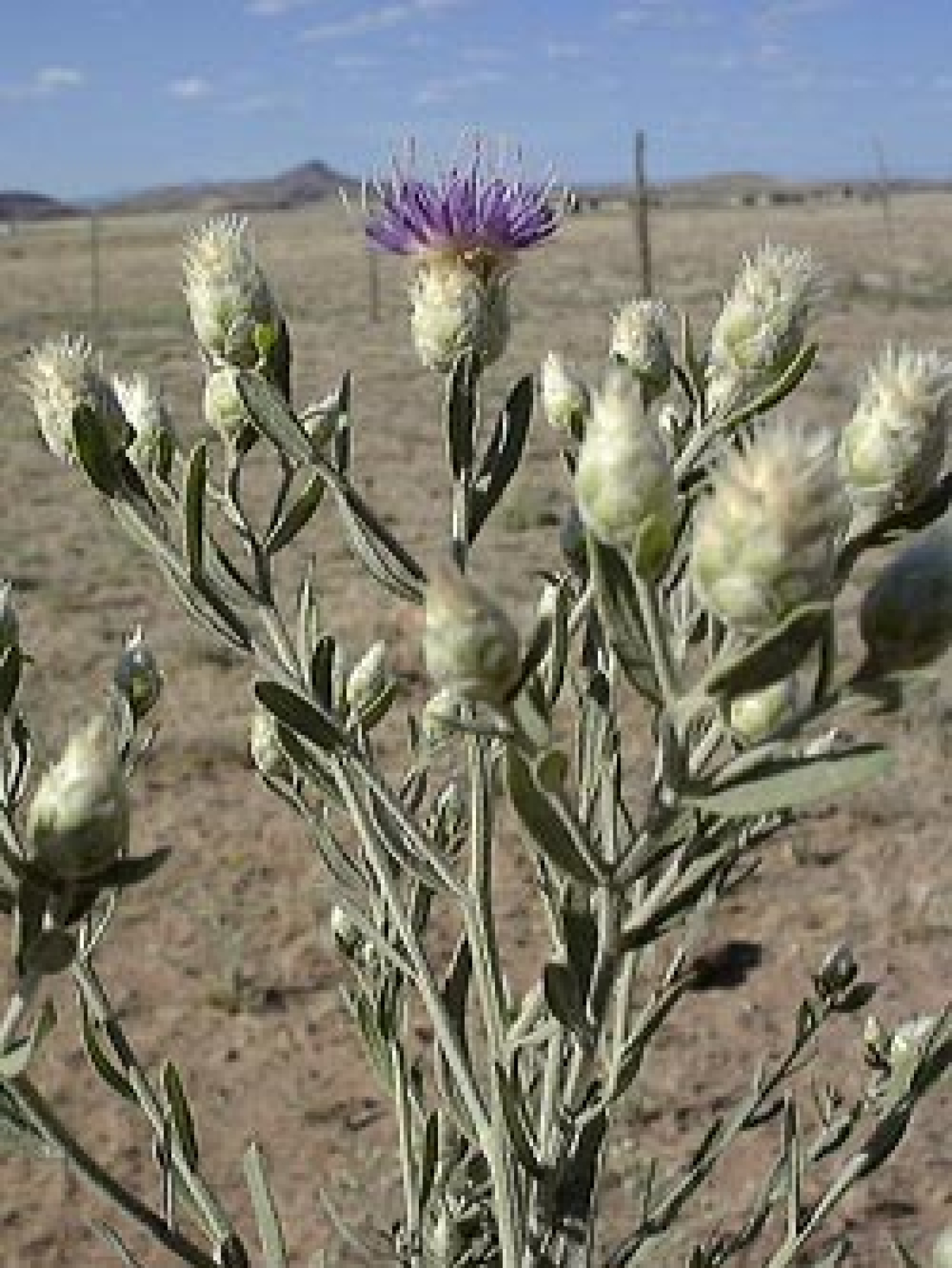The Dolores River Restoration Partnership is working to reduce tamarisk and other nonnative vegetation along the river.
February 18, 2021
The Southwest Conservation Corps crew treats invasive weeds on a Uranium Leasing Program lease tract on the Dolores River.
The headwaters of the Dolores River are located in a meadow called Tin Can Basin, high in the rugged San Juan Mountains of southwest Colorado. Originally named Rio de Nuestra Senora de las Dolores, or River of Our Lady of Sorrows, by Spanish explorers, the Dolores flows 230 miles before joining the Colorado River in the red rock canyon country near Moab, Utah.
The Dolores attracts recreational visitors for its world class river rafting, excellent fishing, and scenic recreation, but it also supports agriculture and municipal water uses. In addition, the river flows through the Uravan Mineral Belt, a major area for uranium mining during the Cold War.
The Dolores River Restoration Partnership (DRRP) is a coalition of public and private organizations, including federal land management agencies, local governments, landowners, and other interests. The partners are all working to reduce tamarisk and other nonnative vegetation along the river, while restoring native plant species, improving riparian habitat, and creating a healthier ecosystem.

Russian knapweed is an invasive species that has damaged ecosystems along the Dolores River corridor.
Since 2011, the U.S. Department of Energy (DOE) Office of Legacy Management (LM) has been working as a DRRP partner to address invasive species and restore native riparian habitat on about 4 miles of the Dolores River that runs through DOE uranium lease tracts.
Danika Marshall, an ecologist with the LM Strategic Partner contractor, said the work is paying off.
“We have a lot more native grasses coming up, native shrubs and forbs,” Marshall said. “It’s improving habitat for grazing livestock and for desert bighorn sheep, deer, and bear. So, everything that comes down to the river corridor for water has a lot more forage on site, rather than the acres of invasive knapweed that was there before.”
Since 2011, LM has partnered with the Southwest Conservation Corps (SCC), a Conservation Legacy program that provides young people with service opportunities through natural resource stewardship projects. SCC Crews spend 1-2 weeks per year at the LM least tracts applying herbicide and manually removing tamarisk, Russian knapweed, and Canada thistle. They also work to seed native species to replace the removed invasive species.

A view downstream of the Dolores River on ULP lease tract SR-14.
“This work is important for the health of the river ecosystem as well as for habitat,” Marshall said. “And it’s important that everyone does their part because if we just did our one 4-mile section, and people upriver from us weren’t doing anything, then whenever it floods all the noxious weed seeds would come down, and all that work would be for nil.”
LM works within the partnership to accomplish vegetation management and restoration activities, and to monitor and measure results against the partnership goals. Other partners upstream and downstream are also working to control invasive species, restore riparian habitat, and promote habitat for wildlife. For example, ranchers who manage a big stretch of riverfront upstream are controlling grazing by alternating pastures to prevent overgrazing that could lead to riverbank erosion.

Danika Marshall scopes out the invasive species control project site along the Dolores River on ULP lease tract SR-14.
Debbie Barr, the program manager for the LM Uranium Leasing program, said it’s been rewarding to see that LM’s DRRP activities have reduced the abundance of invasive plants in these areas over time.
“Restoring native communities along the Colorado River and its tributaries like the Dolores River is important,” said Barr. “By partnering with such a diverse and extensive number of organizations and individuals, we’re able to accomplish so much more together than we could apart.”
Joyce Chavez, the LM Reuse Asset manager, said the partnership fits the LM goal of managing land sustainably.
“A major part of invasive species control is working together to be a good neighbor to ensure that unwanted species don’t overrun neighboring pastures and fields, and negatively impact the riverine ecosystem,” Chavez said.
LM recently renewed its commitment to the DRRP by signing a Memorandum of Understanding with 28 other signatories. LM is proud to continue partnering with DRRP and SCC in addressing invasive species and restoring native vegetation along the Dolores Rivers as part of a larger effort to improve the health of this Wild and Scenic river. The work highlights LM’s commitment to stewardship, and most importantly, ensures the health of this important riparian corridor.

